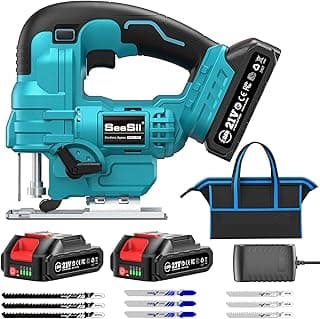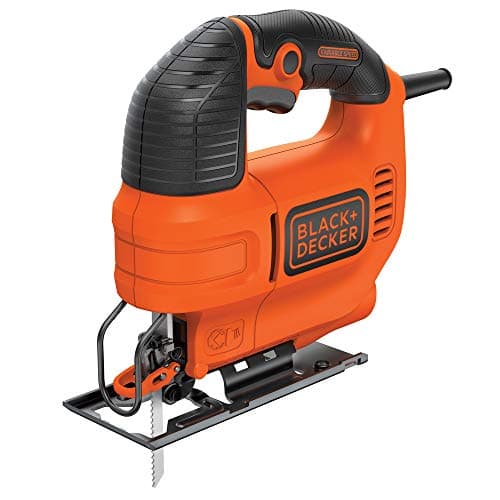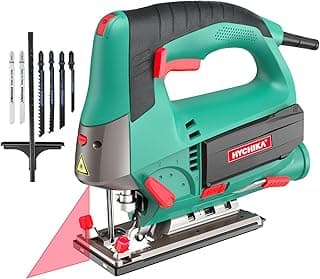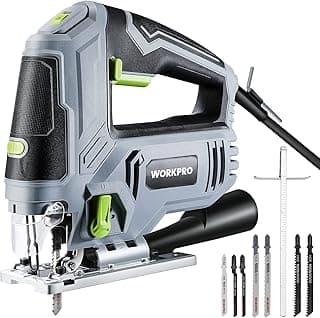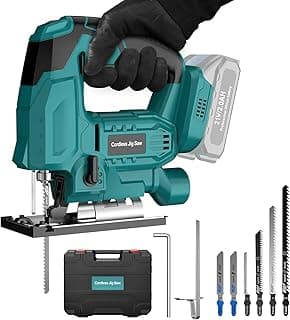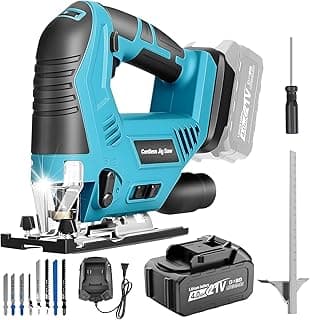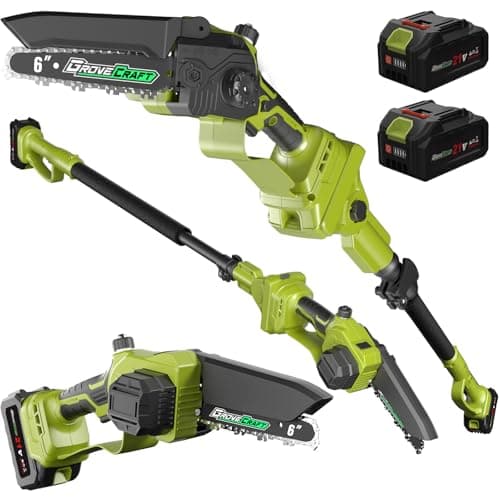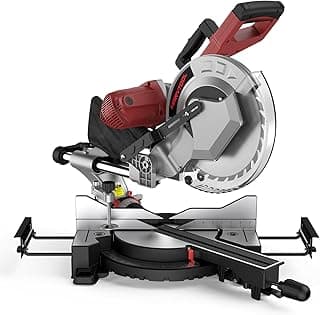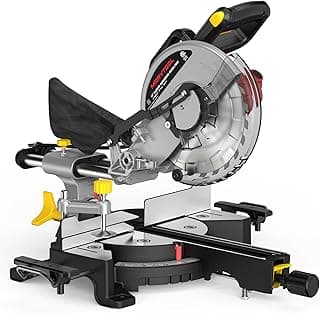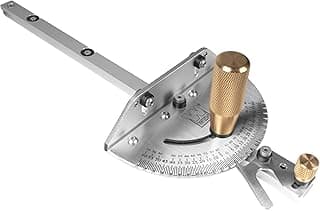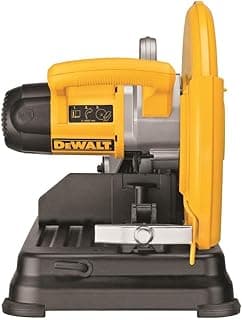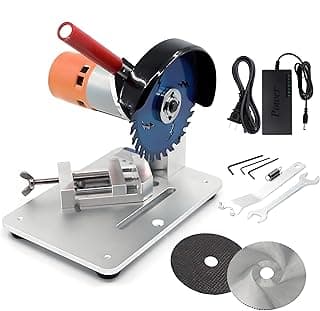Finding the right tool for metalworking can be a challenge—but don’t worry, we’ve got you covered. If you’re searching for the best jigsaw for cutting metal, you want a tool that combines precision, power, and reliability. But here’s the kicker: the same jigsaw that performs perfectly on metal can often handle wood, plastic, and other materials. That’s why it’s important to also consider options like the best jigsaw for home use if you plan to do varied projects around your house. Additionally, if you frequently work on intricate designs, exploring the best jigsaw for cutting curves will help you achieve smooth, precise lines. And for general purposes, choosing the best jig saw ensures you invest in a versatile, long-lasting tool. Keep reading to learn which models stand out and how to get the most from your jigsaw.
Top Picks
Efficient Power: DEWALT 20V MAX XR Jig Saw, 3,200 Blade Speed, Cordless
The DEWALT cordless jigsaw stands out with its brushless motor, offering longer runtime and consistent performance compared to previous models. Its compact design ensures a comfortable grip and precise control, making it ideal for detailed cuts on metal surfaces. The tool features a keyless, lever-action blade change system for fast T-shank blade swaps, while the bright integrated LED illuminates dim work areas. Variable speed controls and a 4-position orbital action provide versatility across different cutting tasks, and the dust blower keeps the cutting line clear.
From a customer perspective, users appreciate the combination of power and maneuverability, noting that the tool handles metal cutting efficiently while remaining easy to control. The LED and dust blower are frequently cited as helpful additions for accuracy. The main limitation is reliance on a battery, which requires users to manage charge levels during extended use. Overall, it’s a reliable choice for both professional and DIY applications.
Tool-Less: BOSCH JS365 120V 6.5 Amp Top-Handle Jigsaw Kit Variable Speed
The Bosch JS365 top-handle jigsaw is designed for efficiency and precision. Its tool-less blade-change system, coupled with a blade ejection lever, allows users to swap blades quickly and safely without touching hot edges. With four orbital-action settings, it can handle smooth to aggressive cuts across wood, aluminum, and steel. The variable speed dial combined with the accelerator trigger gives fine control over cutting speed, while the adjustable dust blower ensures a clear line of sight. The sturdy die-cast foot, complete with a steel insert and on-board bevel Allen key storage, adds durability and convenience.
From a user perspective, the JS365 is praised for its versatility and reliability, handling both indoor and outdoor tasks effectively. The tool-less blade change and dust management features are often highlighted as practical for frequent use. The main drawback is the cord, which limits mobility compared to battery-powered options. Overall, it is a solid choice for professionals and hobbyists seeking accuracy and convenience in a corded jigsaw.
Bright Light: SKIL 6 Amp Corded Jig Saw- JS314901
The Skil corded jigsaw offers a combination of precision and efficiency for wood cutting. Its 4-stage orbital function provides smooth and controlled cuts across various applications, while the two-finger trigger allows enhanced speed control. The adjustable bevel shoe enables quick angled cuts without requiring additional tools, and the on/off dust blower keeps the cutting line visible for greater accuracy. The tool-free blade clamp simplifies blade swaps, and the bright halo LED delivers ten times more illumination than standard lights, reducing shadows and improving workspace visibility.
Customers often appreciate the Skil jigsaw for its bright workspace lighting and ease of use, especially when making angled or detailed cuts. The main limitation is its corded design, which can restrict mobility compared to cordless models. Overall, it is a reliable and user-friendly tool for woodworking enthusiasts and general household projects.
FAQs
What is the best saw to cut metal with?
When it comes to cutting metal, the ideal saw depends on the thickness and type of metal. For thin sheets, a high-quality jigsaw fitted with a fine-toothed blade works exceptionally well, offering control and precision without warping the material. For thicker metal, consider a bandsaw or circular saw with a metal-cutting blade, as these tools provide consistent power and reduce heat buildup. Always use blades labeled specifically for metal, typically made from high-speed steel (HSS) or bi-metal, which resist wear and maintain sharpness longer.
Is 18 or 24 TPI better for metal?
TPI, or teeth per inch, directly affects the cut quality. For metal, a higher TPI is generally preferable because it produces smoother cuts and reduces the risk of snagging or chipping. An 18 TPI blade can handle thinner sheet metal efficiently, offering faster cuts, but a 24 TPI blade is better for hard metals or precision work where smooth edges are critical. In short, use 18 TPI for speed on thinner materials and 24 TPI for accuracy on harder or thicker metals.
What's best to cut through metal?
To cut metal efficiently, you need three things: the right blade, appropriate speed, and proper support. Bi-metal blades or HSS blades are the most reliable. Adjust your jigsaw’s speed to a slower setting to reduce heat and prevent blade wear. Secure the metal on a stable surface to prevent vibration or bending. Additionally, using cutting oil or lubricant on harder metals will extend blade life and ensure cleaner cuts.
How to cut extremely hard metal?
Cutting extremely hard metals like stainless steel or titanium requires careful preparation. First, use a high-quality bi-metal or cobalt blade rated for hard metals. Reduce jigsaw speed to minimize heat buildup, which can damage both the blade and the metal. Apply steady, even pressure rather than forcing the cut, and consider using cutting fluid to cool the surface. For very thick or hardened pieces, multiple passes or a specialized power tool such as a bandsaw or abrasive cut-off saw may be necessary. Safety gear like gloves and eye protection is essential during all metal cutting tasks.
Final Thoughts
Choosing the best jigsaw for cutting metal involves balancing power, blade type, and precision. A versatile jigsaw can handle not only metal but also wood, plastic, and curved cuts, making it a valuable addition to any workshop. By understanding blade TPI, proper speed, and cutting techniques, you can achieve clean, professional results even on the toughest metals. Whether you’re a DIY enthusiast or a professional, investing in a high-quality jigsaw ensures your metalworking projects are efficient, safe, and precise.





